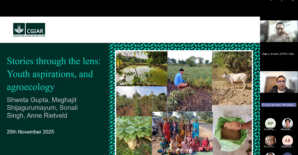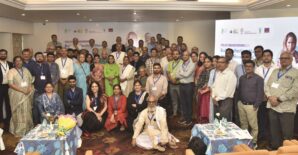
In India, only 9.6% of the children between 6-23 months of age are able to get minimum acceptable diets.
A dip in India’s ranking in the Global Hunger Index (GHI) has rightly created a stir in the country. The continued focus on calories, and the ignorance of nutritional aspects of food are responsible for the distressed state of the food and nutrition system in our country. The present ranking is an outcome, and a true reflection, of the same. A few in the government appear to be shocked and have even questioned the methodology. Why is India, even after 72 years of independence, struggling at the bottom of the GHI rankings? It is high time that we look deeper into the issue and find a plausible solution to the dire straits we are in.
It would be prudent to accept reality. By changing the methodology, or by re-working evaluation criteria, we may move up a couple of notches, but we will continue to be among the lowest performers, and our countrymen will continue to suffer. According to our own Comprehensive National Nutrition Survey (2016-18) and SRS (2018) data, 34.7% of our children are still stunted, 17.3% wasted, and 33.4% underweight. Lack of proper food is not only a development issue but is also a crucial economic issue for any country.
Three out of the four indicators used by the GHI index to rank countries deal with nutrition. These indicators go beyond just meeting calorie requirements—in simple words, a balanced diet with all the nutrients, including micronutrients. The real problem is malnutrition, and not lack of food. Removing hidden hunger, and not just hunger, is the mantra.
Researches have established that in general diets in developing countries are deficient in vitamin A, zinc, and iron, resulting in increased mortality, morbidity, and health and development costs. In India, only 9.6% of the children between 6-23 months of age are able to get minimum acceptable diets. This means that children of comparatively economically well-to-do families, too, suffer from malnutrition—that too, during the most crucial phase of their mental and physical development.
What options do we have? Food supplements, such as micronutrient-rich capsules or food products fortified during processing, appear to be the fastest solution. However, besides the low purchasing power of the poor, constraints like lack of better infrastructure, efficient technology, and a reliable distribution system make it an unattainable option. The next option could be the implementation of efficient information, education, and a communication programme motivating consumers to change their food habits in favour of nutrient-rich foods. Again, this is a costly and time-consuming option. Third, consumption of diversified diets may appear to be a sustainable option to control malnutrition, but this doesn’t seem to be possible in the short term as it will require a change in people’s food habits and preferences.
Biofortification, an agriculture-based approach to the development and dissemination of micronutrient-rich crops, offers a viable option to mitigate malnutrition and hidden hunger. Unlike the above-listed options, which demand considerable time and resources, biofortification is simple and economical. It mainly targets poor and rural households, where home production and consumption of staple food crops is significant, and consumption of the marketed surplus is most likely to remain within the community. Enriching staple crops with required micronutrients reduces people’s nutritional vulnerability because, during economic shocks, the poor tend to reduce their consumption of higher-value food commodities that are naturally rich in micronutrients. With a one-time R&D investment, biofortified seeds could spread through the existing seed distribution systems. Farmers, even with limited resources and market access, can grow biofortified crops since they don’t need repeated purchases of seeds year after year—they can use a part of their produce as the seeds for the next year.
For farmers to grow the biofortified crops, the nutrient-rich varieties should be economically remunerative. The speed of adoption of the seed will depend upon the efficiency of the seed distribution system, and the support of public extension services. For consumers to consume, besides taste, texture, and visual appearance, awareness about malnutrition, easy availability, and access of cereals at an affordable price are crucial. It may be essential to understand that consumers’ acceptance influences farmers’ adoption decisions and vice-versa. Low acceptance by the consumers will lower market price for farmers, and low adoption by farmers will make the product unaffordable for the poor consumers.
Recent initiatives of the government, like the Pradhan Mantri Matru Vandana Yojana, POSHAN Abhiyan (National Nutritional Mission), and other schemes, namely, the Integrated Child Development Services, mid-day meal scheme, and the National Food Security Act are well-intentioned and have been able to provide food to people to survive. However, the recent GHI ranking has reminded us that the need of the hour is to go beyond only hunger, and to solve the issue of hidden hunger. Here, biofortification offers a reasonable option.
This article was originally published in Financial Express



